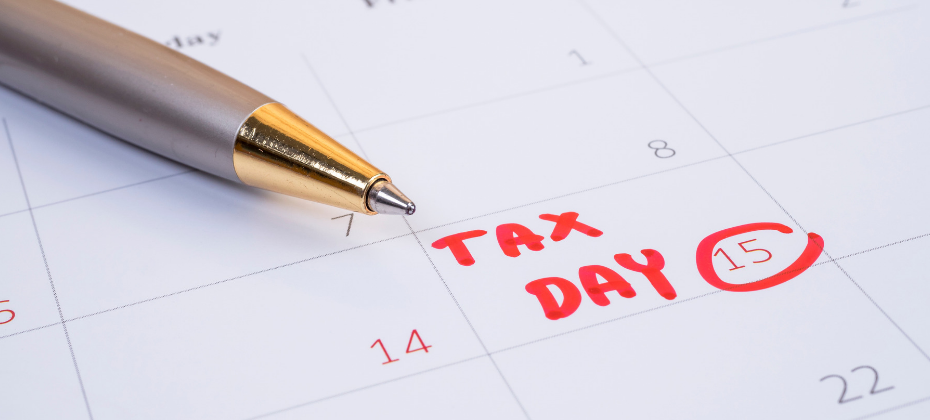Tag: collections best practices

We’ve popped the bottles at midnight, now it’s time to burst the reality bubble. Countdown: t-minus less than 90 days until what is for many the dreaded April 15 tax deadline. Tax Season - Get Started Coupled with debt consolidation post-holidays, January is a harsh contrast to all the feasting and festivities of the holiday season. However, the tax season doesn’t necessarily have to be synonymous with doom and gloom – many Americans look forward to receiving a tax refund. And of those people expecting a tax refund, 35% of consumers said they would use it to pay down debt, according to the National Retail Federation. Lenders and financial institutions can help their consumers get off on the right financial foot for 2019 by helping them to pay down their debt. Here are 5 tools you need to have this tax season to make the most of your collections efforts: 1. Identify your target market – Tax Season Payment IndicatorTM Did you know the average tax refund in 2016 and 2017 was over $2,760, according to the IRS? Also, during the 2017 tax season, 45 million consumers paid at least $500 and 10% or more of a tradeline balance(s), according to Experian data. Tax Season Payment Indicator examines payment behavior over the past two years to determine whether a consumer has made a large payment to a tradeline balance – or balances – during tax season. 2. Keep up-to-date on consumer information – Clear ProfileTM Skip tracing just got easier. Narrow in on the right contact information for your past-due consumer using Clear Profile. Leveraging Clarity Service’s database, Clear Profile provides the most recent and historical demographic elements associated with your consumer’s previous applications including addresses, phone numbers, employers, emails and banks. 3. Know the right time to collect – Collection TriggersSM Take the guesswork out of how to manage your collections efforts. Track your accounts to notify you of a new contact information and changes that indicate your past-due consumers’ ability to pay. 4. Stay ahead of fraudsters – CrossCoreTM Fraudsters are everywhere, so protect your customers and your organization by monitoring your portfolio to keep fraudulent accounts from being opened. Still wondering how to get tax season ready? Get Your Collections Tax Season Ready

Ben Franklin was wrong. Death and taxes are not the only two constants in life. For many, debt makes a third. And where there is past-due debt, collections is not far from the conversation, if not included in the same breath. While the turn of the new year may mark some arduous work to be done – losing those holiday pounds, spring cleaning, balance transfers and tax filings – there’s also opportunity for lenders, collectors and consumers alike. Just as the spikes in retail trends are analogous with the holiday months, there’s an evident uptick in collections during tax season year after year. As such, successful lenders, financial institutions and collections agencies know that January, February and March are critical months to engage with past-due customers, specifically as they relate to the tax season. The average tax refund for 2016 and 2017 was $2,860 and $2,769 respectively, according to the IRS. And while some may assume that all consumers look at this money as an opportunity for a “treat yourself” splurge, 35% of consumers expecting a refund said they would use it to pay down debt, according to the National Retail Federation. Additionally, during the 2017 tax season, 45 million consumers paid at least $500 and 10% or more of a tradeline balance(s), according to Experian data. So, if past-due consumers want to pay down debt, and the ultimate goal of collections is to recoup over-due funds, and first quarter collections growth appears to be driven by tax refunds, how do we make the connection? Think of the scene from Jerry Maguire – “Help me, help you!” Help consumers help themselves. Experian’s new Tax Season Payment IndicatorTM examines payment behavior over the past two years to determine whether a consumer has made a large payment to a tradeline balance – or balances – during tax season. “Millions of consumers used their tax refunds to pay down debt and many plan to do it again,” said Denise McKendall, Product Manager. “Collectors that leverage previous tax season payment behavior to identify and strategically engage with this group will benefit the most from the tax refund season.” Engaging this information can be like having a collections crystal ball. Targeting consumers that are likely to use their refund to pay down debt can influence messaging, campaign refinement and the timeliness of your touchpoints, resulting in greater collections ROI. This means as the year closes out and planning begins for 2019, collections prioritization strategy is key. And those conversations should be taking place now. Are you tax season ready? Learn More About Tax Season Payment Indicator

It should come as no surprise that the process of trying to collect on past-due accounts has been evolving. We’ve seen the migration from traditional mail and outbound calls, to offering an electronic payment portal, to digital collections and virtual negotiators. Being able to get consumers who have past-due debt on the phone to discuss payments is almost impossible. In fact, a recent informal survey divulged a success rate of a 15% contact rate to be considered the best by several first-party collectors; most reported contact rates in the 8%-range. One can only imagine what it must be like for collection agencies and debt buyers. Perhaps, inviting the consumer to establish a non-threatening dialog with an online system can be a better approach? Now that collectors have had time to test virtual collections, we’ve collected some data points. Conversion rates, revisits, and time of day An analysis of several clients found that on average 52% of consumers that visit a digital site will proceed to a payment schedule if the right offer is made. 21% of the visits were outside the core hours of 8 a.m. to 8 p.m., an indication that consumers were taking advantage of the flexibility of reaching out at any time of the day or night to explore their payment and settlement options. The traditional business hours don’t always work. Here is where it really gets interesting, and invites a clear comparison to the traditional phone calls that collectors make trying to get the consumer to commit to a payment plan on the line. Of the consumers that committed to a payment plan, only 56% did it in a single visit. The remaining 44% that committed to payments did so mostly later that day, or on a subsequent day. This strongly suggests they either took time to check their financial status, or perhaps asked a friend or family to help with the payment. In other words, rather than refusing to agree to an instantaneous agreement pressured by a collector, the consumer took time to reflect and decide what was the best course of action to settle the amount due. On a similar note, the attrition rate of “Promises to Pay” were 24% lower using online digital solutions versus the traditional collector phone call. This would be consistent with more time to agree to a payment plan that could be met, rather than weakly agreeing to a collector phone call just to get the collector off the phone. Another possible reason for a lower attrition rate may be that a well-defined digital collection solution can send out reminders to consumers via email or text in advance of the next scheduled payment, so that the consumer can be reminded to have the funds available when the next payment hits their account. For accounts where settlement offers are part of the mix, a higher percentage of balances is being resolved versus the collection floor. In fact, the average payment improvement is 12% over what collectors tend to get on the collections floor. The reason for this significant change is unclear, but the suspicion is that a digital collection solution will negotiate stronger than a collector, who is often moving to the bottom of an acceptable range too soon. What's next? Further assessing the consumer’s needs and capabilities during the negotiation session will undoubtedly be a theme going forward. Logical next steps will include a “behind-the-scenes” look at the consumer’s entire credit picture to help the creditor craft an optimal settlement amount that both the consumer can meet, and at the same time optimizes recovery. Potential impact to credit scores will also come into the picture. Depending on where the consumer and his past-due debt is in the credit lifecycle, being able to reasonably forecast the negative impact of a missed payment can act as an additional argument for making a past-due or delinquent payment now. As more financial institutions test this new virtual approach, we anticipate customer satisfaction and resolutions will continue to climb.

Create a better consumer experience during the debt collection process When most people think about debt collection, unpleasant images may come to mind, like relentless phone calls or collections notices. Whatever the case may be, the collections process often ends in a less than desirable experience for consumers. And, quite frankly, it needs to change. Steve Platt, Experian’s Group President of Decision Analytics, recently spoke with American Banker regarding how banks and other financial institutions can create a better consumer experience during the debt collection process. While balancing consumer needs and managing rising delinquencies can be a complex challenge, Steve conveyed that the technology and analytics exist to simplify the process. As an industry, we’re at a point where customer acquisition costs far exceed the costs to nurture existing customers through the entire life-cycle - from application to repayment. So, suffice to say, lenders need to rethink how they engage and communicate with their customers. Technology to the rescue Luckily, we live in an era where troves and troves of data are made available every day. We just need to help lenders leverage it to its fullest extent. For example, the right data and technology can help answer questions, such as: What’s the most effective communication channel to reach a customer? When should you contact them? How often? There isn’t a one-size-fits-all approach to debt collection. Each customer is different. Each has their own unique situation. Effective debt collection is about knowing the difference between a customer who has simply forgotten to pay and those who may be struggling financially, and communicating with them accordingly. Go digital Part of knowing how to engage consumers is also understanding we live in a digital world. We perform many of our daily tasks through our mobile devices, desktops or tablets. So, it would make sense for lenders to help their customers manage their past-due accounts virtually. Imagine being able to negotiate payment dates and terms from the privacy of your own home. It just so happens that technology can make this a reality. At the end of the day, the customer needs to be at the heart of the collections strategy. Each customer needs to be communicated with on a case-by-case basis depending on their unique circumstances. The resources exist to make customers feel like individuals, rather than numbers in a spreadsheet. And the lenders that appeal to the customer’s experience will see lower charge-offs and higher customer retention.

It should come as no surprise that reaching consumers on past-due accounts by traditional dialing methods is increasingly ineffective. The new alternative, of course, is to leverage digital channels to reach and collect on debts. The Past: Dialing for dollars. Let’s take a walk down memory lane, shall we? The collection approach used for many years was to initially send the consumer a collection letter recapping the obligation and requesting payment, usually when an account was 30 days late. If the consumer failed to respond, a series of dialing attempts were then made, trying to reach the consumer and resolve the debt. Unfortunately, this approach has become less effective through the years due to several reasons: The use of traditional landlines continues to drop as consumers shift to cell and Voice Over Internet Protocol (VOIP) services. The cost of reaching consumers by cell is more costly since predictive dialers can’t be used without prior consent, and the obtaining and maintaining consent presents its own set of tricky challenges. Consumers simply aren’t answering their phones. If they think a bill collector is calling, they don’t pick up. It’s that simple. In fact, here is a breakdown by age group that Gallup published in 2015, highlighting the weakness of traditional phone-dialing. The Present: Hello payment portal. With the ability to get the consumer on the phone to negotiate a payment on the wane, the logical next step is to go digital and use the Internet or text messaging to reach the consumer. With 71 percent of consumers now using smartphones and virtually everyone having an Internet connection, this can be a cost-effective approach. Some companies have already implemented an electronic payment portal whereby a consumer can make a payment using his or her PC or smartphone. Usually this is prompted by a collection letter, or if permitted by consumer consent, a text message to their smartphone. The Future: Virtual negotiation. But what if the consumer wants to negotiate different terms or payment plans? What if they want to try and settle for less than the full amount? In the past – and for most companies operating today – this translates into a series of emails or letters being exchanged, or the consumer must actually speak to a debt collector on the phone. And let’s be honest, the consumer generally does not want to speak to a collector on the phone. Fortunately, there is a new technology involving a virtual negotiator approach coming into the market now. It works like this: The credit grantor or agency contacts the consumer by letter, email, or text reminding them of their debt and offering them a link to visit a website to negotiate their debt without a human being involved. The consumer logs onto the site, negotiates with the site and hopefully comes to terms with what is an acceptable payment plan and amount. In advance, the site would have been fed the terms by which the virtual negotiator would have been allowed to use. Finally, the consumer provides his payment information, receives back a recap of what he has agreed to and the process is complete. This is the future of collections, especially when you consider the younger generations rarely wanting to talk on the phone. They want to handle the majority of their matters digitally, on their own terms and at their own preferred times. The collections process can obviously be uncomfortable, but the thought is the virtual negotiator approach will make it less burdensome and more consumer-friendly. Learn more about virtual negotiation.